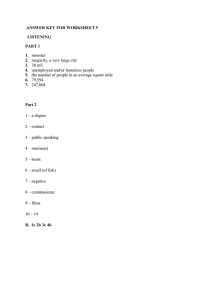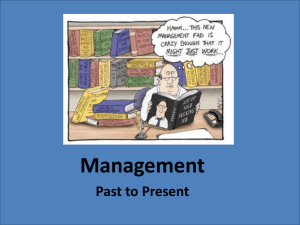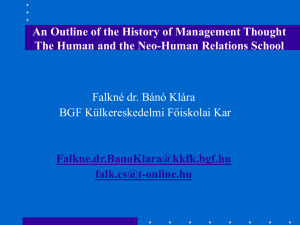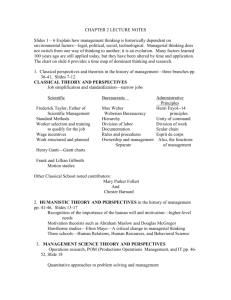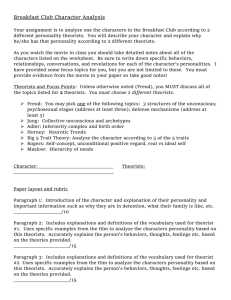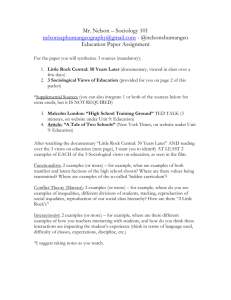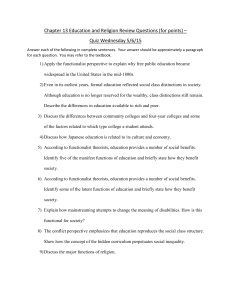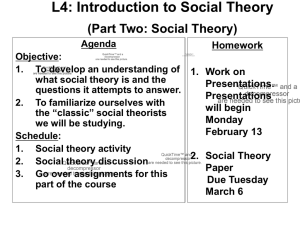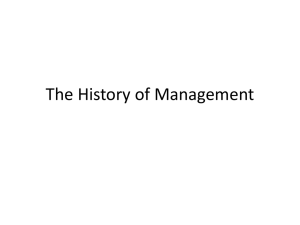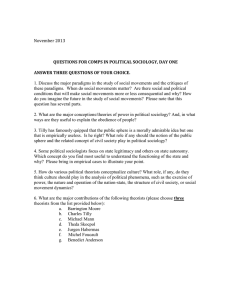Public Administration organizational theory
advertisement
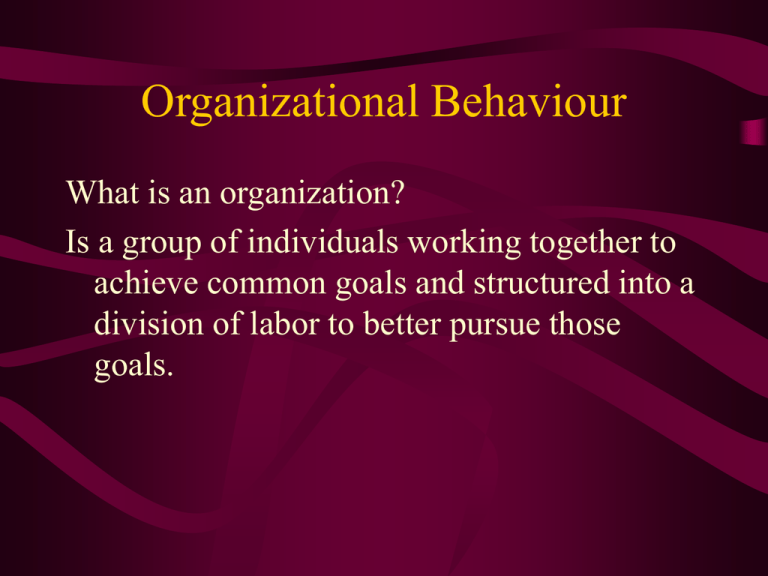
Organizational Behaviour What is an organization? Is a group of individuals working together to achieve common goals and structured into a division of labor to better pursue those goals. Organizational Theory • Is a set of laws or propositions about organization that are used to explain how people and groups behave within varied structures. • A major component of any theory of organization is a focus on organizational development, an approach to organizational management that analyze organizational problems and their solutions. Two reasons for introducing organizational theory 1- To explain How & Why they behave as they do and to suggest ways to improve their performance. 2- Large-scale organization were introduced, thus emerging organizational theory. Schools of Organizational Theory Four schools:1. Classical Theory. 2. Humanist Theory. 3. Neoclassical Theory. 4. Systems Theory. The Classical School of Organization Theory They were the 1st to develop such a theory as a foundation which later scholars built their own work. They stress the structural arrangements of organization as machine-like . For these theorists efficiency is the most important value. Classical Theorists assume:1. There is a single best way to structure an organization to maximize productivity that can be recognized by systematically examining the way organizations behave. 2. They emphasize the need for a division of labor. 3. They also emphasize hierarchal structure, chains of command with formal systems of authority and bureaucratic behavior. Adam Smith He saw Modern Organizations as “Force Multipliers” They allow for the labor of individual parts to be combined in such a way that the sum of their efforts is greater than those of their parts. Like a machine it allows for efficiency of productivity. Frederick Taylor “Scientific Management” = Time & Motion Studies Specific steps & procedures of implementation Scientific management assumes four fundamental values: Efficiency = max. goals + min. cost Rationality = the most direct relationship of work to the organization’s objectives Productivity = the highest poosible level. Profit = which is the ultimate goal. Scientific management makes three main assumptions:1. Authority:- is best when highly centralized at the top levels of management. 2. The ideal way to perform a task is through scientific research. 3. Management’s job is : Select ----- capabilities. Organize ----- to best perform. Train ----- to achieve objectives. Criticism Critics say :Theorists of these theories look at workers as mere cogs, motivated only by financial incentives. The Human Relations school 1. They saw the classical theorists as overly authoritarian. And this suppressed creativity and lacked a focus on human beings in organization. 2. They had the same basic values:Efficiency & Productivity same ends but different means. 3- They emphasized a need to recognize informal aspects of organization. 4- Classical Theorists Assume that workers are:rational and economically motivated. Human Theorist Assume that workers are affected by both:• Economic • Non-economic factors which they want to know and direct. Mary Parker Follett She emphasized the psychological factors that affect people in organizations. The principle task of an organization:1. Determine what it wanted its employees to do. 2. Guide and control their conduct to get them to do it. To do this successfully we must stop trying to suppress differences is a good thing, it helps growth and development. She changed:Chain of Command Power over Into:- Law of situation Power with Hawthorne Effect Was a result of a 5 year study conducted by Elton Mayo that proved that many workermanagement problems were not the result of :1. Insufficient task specifications. 2. Inadequate wages. * Hawthorne is an electric plant near Chicago. But, a reflection to social and psychological factors “Social Institutions” Workers respond to:• Better working conditions. • Attention. This is called “The Hawthorne effect” The neoclassical school of organizational theorists Like classical theorists they still measure administrative capacity by efficiency. But they emphasize :1- decision making as the heart and soul of administration. 2- organizational roles over individual roles. Herbert Simon He viewed decision making as the central act of administration, and proposed that the individual decision maker is rational only within the environmental context of the particular organization. Thus:- The facts of any circumstance are validated by the given set of values in which those facts or actions occur. Simon’s Important Ideas He was te first to distinguish “programmed” and “unprogrammed” decisions. He emphasized the importance of “management information systems”. He pioneered improved organizational decision making through quantitative methods. He led the way in studying the process by which administrative organizations make decisions. The “Systems school” of organizational theorists What is a system? It is simply any organized collection of parts united by prescribed interactions and designed for the accomplishment of a specific goal or purpose. System theory emphasizes an interactive and interrelated set of elements: Environment Inputs (equipment, supplies, employees) Processes Outputs (products or services) Feedback Comparison Classical theory • Simplistic & unidimensional • Formal & static Systems theory Complex & multidimensional Dynamically seeking shifting states of equilibrium. The systems theory differs from the three proceeding schools. To systems theorists efficiency is not the cardinal value Organizations are open, complex, multidimensional, etc… Systems Theorists Emphasize Communication & Feedback Successful organizations need: Adaptability to change. Integration. Coordination. cooperation over competition. Differentiation & Elaboration. David Easton Inputs Respond -ing to outputs Feedback Outputs
